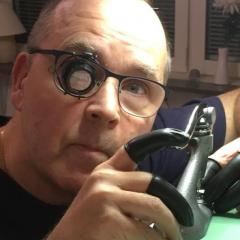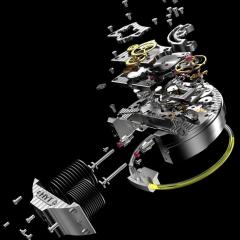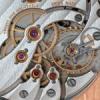Search the Community
Showing results for tags 'oiling'.
-
These jewels are from my very first ETA movement that I'm servicing (cal. 1080), and none of the movements I've been working on so far (Vostoks, Poljots, and a Unitas 6498) has had jewels like these. My question is simply how to oil them? They do look a lot like cap jewels and maybe that's what they are called? If I were to guess I would say that they should be oiled the same way that spring cap jewels are oiled, but I'd really like to know for sure. And, while I'm at it, what's the purpose of these non-springed "cap jewels"? I've also seen them in pictures of some really old movements having a balance without a shock spring. The movement comes from my grandfather's (born 1910) Ernest Borel Incastar which we believe he bought sometime in the early 1960-ties. It's a family heirloom, and I've been waiting to service it until having worked up some confidence. I had no idea it harboured an ETA movement so that was a pleasant and rather exciting surprise. As far as I know, it has never been serviced. As can be seen in the above picture it has a really interesting regulator mechanism, and I actually found this ad for it on eBay. Setting the rate I would assume is just a matter of rotating that five-pointed "star", but I wonder if that entire arm can be slid to regulate the beat error?
-
Hi Fellow People, Im reaching out as I’m currently learning all I can about watchmaking, and am working through the BHI distance learning technicians course, with my exam booked for May. I will need to service a quartz watch as part of my practical exam, and am learning about watch lubrication. A few months ago I found a great article that covered the technique for dipping and collecting the right amount of oil on the oiler, such as the speed and angle of the dip, however, I now can’t find it anywhere, no matter how much I search the internet Does anyone have or can point me in the right direction of instructions specifically on oil collection on the oiler? As you will know there is lots on the actual oiling process but not the oil collection process. Any help would be greatly appreciated. Thanks Bethan
-
Good evening all , just wondering do any of you guys or gals like to use capillary fountain oilers . I have been using them combined with dip oilers for a while and I must say I enjoy using the capillary oilers some times over the dip oilers . Am I old fashioned or what ?
-
Hello! Do you oil the shouldered “safety” screws that hold in place the coupling clutch 8080, the sliding gear 8100 or the hammer 8219? If so, do you also put a very tiny drop of hp 1300 under them? you can find the entire doc here: http://watchguy.co.uk/wp-content/uploads/2012/12/Le-Landeron-48.pdf Thank you! Bogdan
-
This is a 2 part series from Oklahoma State University of Watchmaking on the correct use of Oilers. Oiling a movement correctly is one of the most important skills you need to master, and these videos give some excellent advice. Part 1 https://www.youtube.com/watch?v=eMJiX0MA-Wg Part 2 https://www.youtube.com/watch?v=rlMW5qMHaNc
- 7 replies
-
- 4
-

-
- Oilers
- Lubrication
-
(and 2 more)
Tagged with:




